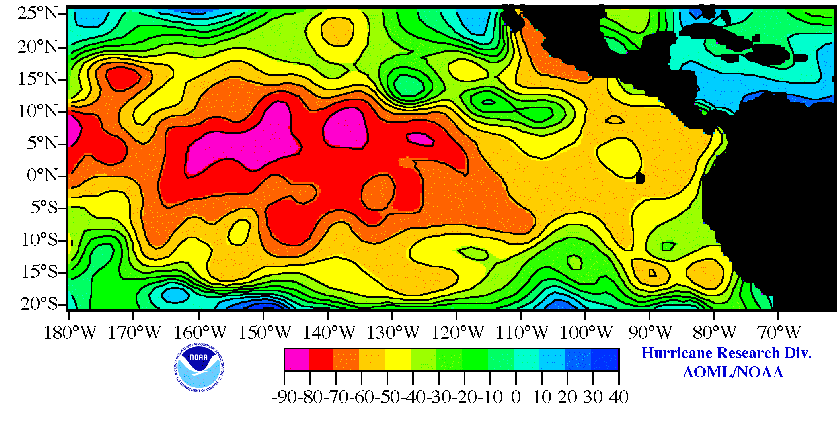
Correlation coefficient (values are x100) for the FIT years (see text) during the period 1968-1991 between the number of major hurricanes (of easterly-wave origin) during the most active three months of the Atlantic hurricane season (August-October), and sea-surface temperatures (SSTs) leading by two months (June-August). The two-month lead shown here gives the strongest correlations. The correlations are significant at the 95% significance level for values < -50 (i.e., orange, red or pink shading). The "peak" area, around 150°W, would not be adequately measured by indices for any of the standard Nino regions (1+2, 3 or 4). The strongest correlations occupy a region very similar to the Nino 3.4 region (120-170°W, 5°S-5°N) recently elucidat ed by other investigators. There were virtually no regions of statistically significant correlations east or west of the dateline for the NOT-FIT sample (not shown). The results suggest that to properly portray the relationship between tropical Pacific SSTs and Atlantic major hurricanes, values for the Nino 3.4 region for years where the tropic-wide mode (FIT years) is present should be used.